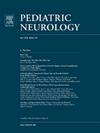管理发热感染相关癫痫综合征的挑战:来自大量儿科患者的真实世界经验
IF 3.2
3区 医学
Q2 CLINICAL NEUROLOGY
引用次数: 0
摘要
背景:发热性感染相关癫痫综合征(FIRES)是一种具有难治性癫痫持续状态的灾难性神经炎性疾病。疾病管理继续构成重大挑战。方法对印度三级医疗中心管理的FIRES患者进行回顾性观察研究。随访结果采用自身免疫性脑炎临床评估量表(CASE)进行评估。结果41例儿童(男27例)符合标准。平均出现年龄为7.2岁(范围2-14岁)。在药理学昏迷前,抗癫痫药物(asm)的中位数为7(范围2-12),随后所有患者都需要抗癫痫药物。诱导药理学昏迷的中位持续时间为11天(范围1-125天),其中咪达唑仑(41天)是最常见的药物,其次是氯胺酮(33天)、硫喷妥酮(18天)和异氟烷(13天)。只有少数药物昏迷患者癫痫发作缓解(氯胺酮21%,咪达唑仑17%,硫喷妥酮16.6%)。97%的儿童同时接受甲基强的松龙治疗(40例),63%静脉注射免疫球蛋白(26例),32%美罗华(13例),32%环磷酰胺(13例)和56%生酮饮食(23例)。在中位随访37个月(范围9-96)时,34%(14)名儿童死亡。在其余27例患者中,癫痫控制不良的占多数(18例,67%)。14例患者的CASE评分≤5分(预后良好),13例患者的CASE评分≤5分(预后较差)。在两组中,生酮饮食、药理学昏迷或免疫调节治疗的结果没有统计学上的显著差异。结论:儿童FIRES的治疗具有挑战性,目前大多数麻醉药和传统免疫调节疗法在癫痫发作控制和改变FIRES预后方面的有效性有限。本文章由计算机程序翻译,如有差异,请以英文原文为准。
Challenges in Management of Febrile Infection-Related Epilepsy Syndrome: Real-World Experience From a Large Cohort of Pediatric Patients
Background
Febrile infection-related epilepsy syndrome (FIRES) is a catastrophic neuroinflammatory disorder with refractory status epilepticus. The disease management continues to pose significant challenges.
Methods
A retrospective observational study of patients with FIRES managed at tertiary care centers in India. The follow-up outcome was assessed using the Clinical Assessment Scale in Autoimmune Encephalitis (CASE).
Results
Forty-one children (27 males) were eligible. The mean presentation age was 7.2 years (range, 2-14). A median of 7 (range, 2-12) antiseizure medications (ASMs) were tried before pharmacologic coma, which was subsequently required in all patients. The pharmacologic coma was induced for a median duration of 11 days (range, 1-125), with midazolam (41) being the most common medication, followed by ketamine (33), thiopentone (18), and isoflurane (13). Only a minority had seizure resolution on pharmacologic coma (ketamine 21%, midazolam 17%, and thiopentone 16.6%). Ninety-seven percent children also concurrently received methylprednisolone (40), 63% intravenous immunoglobulin (26), 32% rituximab (13), 32% cyclophosphamide (13), and 56% ketogenic diet (23). At a median follow-up of 37 months (range, 9-96), 34% (14) children had died. Of the remaining 27, epilepsy was poorly controlled in the majority (18 children, 67%). Also, 14 patients had a CASE score of ≤5 (good outcome) and 13 had a score of >5 (poor outcome). In both groups, there was no statistically significant difference in outcomes with the ketogenic diet, pharmacologic coma, or immunomodulatory therapies.
Conclusions
The management of FIRES in children is challenging, with limited effectiveness of most currently practiced anesthetic agents and conventional immunomodulatory therapies in seizure control and in altering the outcome in FIRES.
求助全文
通过发布文献求助,成功后即可免费获取论文全文。
去求助
来源期刊

Pediatric neurology
医学-临床神经学
CiteScore
4.80
自引率
2.60%
发文量
176
审稿时长
78 days
期刊介绍:
Pediatric Neurology publishes timely peer-reviewed clinical and research articles covering all aspects of the developing nervous system.
Pediatric Neurology features up-to-the-minute publication of the latest advances in the diagnosis, management, and treatment of pediatric neurologic disorders. The journal''s editor, E. Steve Roach, in conjunction with the team of Associate Editors, heads an internationally recognized editorial board, ensuring the most authoritative and extensive coverage of the field. Among the topics covered are: epilepsy, mitochondrial diseases, congenital malformations, chromosomopathies, peripheral neuropathies, perinatal and childhood stroke, cerebral palsy, as well as other diseases affecting the developing nervous system.
 求助内容:
求助内容: 应助结果提醒方式:
应助结果提醒方式:


